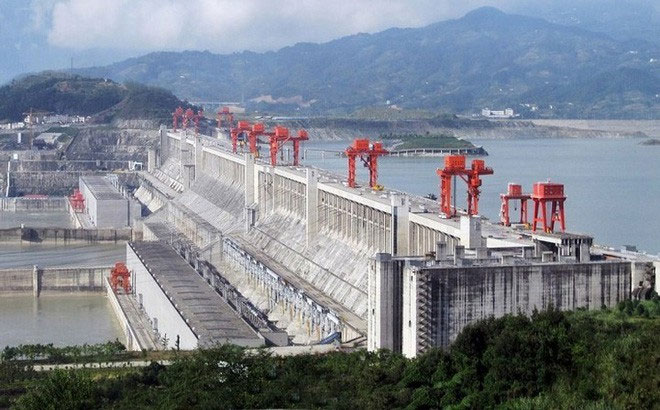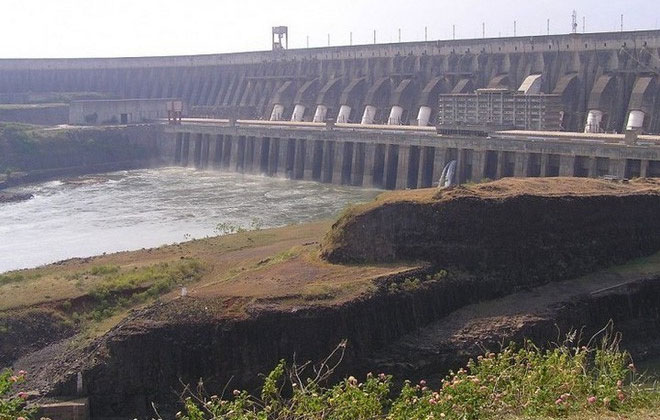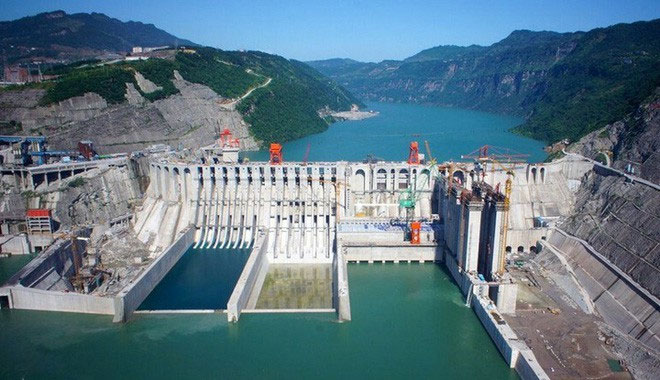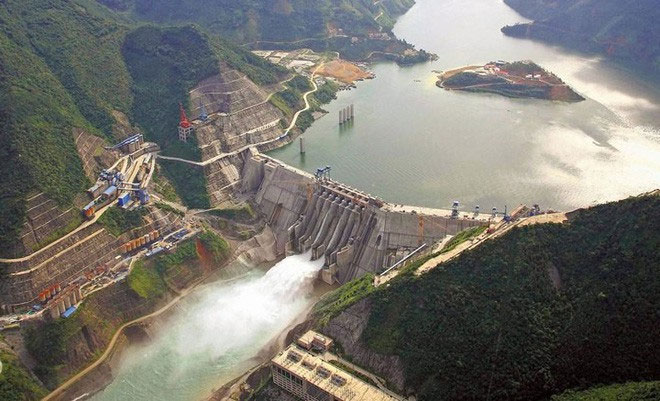Discover the world's largest hydroelectric dam
The list of the world's largest hydroelectric dams includes super-powerful dams of up to 22,500MW in China and elsewhere in the world.
Hydropower is the main source of electricity for countries with large rivers and lakes. In order to make the most of the water's power, hydropower plants often have to build large dams to store water.
Hydroelectric dams are the main and largest source of energy for some countries around the world, including Vietnam, China or Laos.
Of course there will be large, small dams depending on the topography and the initial capacity expected. In this article, we will point through the list of the 10 largest hydroelectric dams operating in the world. .

The Three Gorges Dam is located in Hubei, China and is also the world's largest hydroelectric dam. The plant can produce about 22,500MW of electricity. This construction cost is not small, up to 37 billion USD.
The dam began to be built in 1994 and it was not until 2012 that it was officially completed. The giant power plant has 32 main turbines and 2 small generators. Each turbine has a capacity of 700MW, with 2 generators of 100MW.
This dam is even capable of slowing the Earth's rotation, because the volume of water stored in the lake is extremely large.
Itaipu dam

This dam is located on the border between Brazil-Paraguay. The capacity of this factory can reach 14,000MW.
Itaipu dam has been in use since 1984 and has reached a world record of power output. The amount of concrete to build this dam is estimated to be enough to build 210 stadiums and 380 Eiffel towers.

This is the second largest hydropower plant in China. The dam is located on the Jinsha River in Yunnan Province. The Bach Hac Than Dam can generate up to 13,860 MW of electricity. In the world alone, Bach Hac Than is the third largest hydroelectric power in the world in terms of electricity output.
Guri Dam

Guri Dam is located on the Caronni River, Venezuela. The dam has a capacity of up to 10,300MW and is Venezuela's largest source of freshwater.
Guri Dam provides about 73% of annual electricity production for all Venezuela.
Tucurui Dam

This is Brazil's first major hydropower project built inside the Amazon jungle. Tucurui hydropower can generate electricity output of about 8,370MW.
Xiangjiaba Dam

As one of the world's largest hydroelectric dams, Xiangjiaba is located in the middle of Yunnan and Sichuan provinces. The maximum capacity of the plant is 6.448MW.
Grand Coulee Dam

The dam is located in Washington state. The maximum capacity of the plant is 6,809MW and is the largest hydroelectric plant in the United States. The Grand Coulee Dam was built between 1933 and 1942.
Longtan Dam

This is also a dam in China with a maximum capacity of 6,426MW. This dam plays an important role in improving maritime and commercial routes across China.
Krasnoyarsk Dam

Krasnoyarsk hydroelectric plant is located in Russia. This dam can generate 6,000MW of electricity. Krasnoyarsk hydroelectric dam has a role in regulating the climate in the area, as it can free up uninterrupted water and prevent rivers from freezing in the winter.
Robert-Bourassa Dam

Robert-Bourassa Dam is located in James Bay, Quebec has a capacity (5,616MW) and is at the top of the world's largest underground power station.
Although it is extremely useful for irrigation and electricity production, many experts say that the reverse side of hydropower is an environmental and ecological condition affected. Therefore countries need to calculate very carefully to avoid environmental consequences later.
- The construction site of the second largest hydropower station in the world
- The world's largest hydroelectric dam has many consequences
- Will hydroelectric dams eradicate the largest Pacific salmon?
- Is the Three Gorges Dam in China deformed?
- Chinese hydroelectric dams slow down the Earth
- South Africa hydroelectric dam has a capacity of 480 billion liters of running water
- 'Conquering' the Da River to build Hoa Binh Hydroelectricity
- China's largest dam is as strong as 15 nuclear reactors
- Through the world's third largest hydroelectric dam construction project
- Hydroelectric dams can cause 70% extinction of wildlife
- No decision has been made on Lao hydroelectric dam
- Farmers make their own cheap mini hydroelectric plants
 'Fine laughs' - Scary and painful torture in ancient times
'Fine laughs' - Scary and painful torture in ancient times The sequence of numbers 142857 of the Egyptian pyramids is known as the strangest number in the world - Why?
The sequence of numbers 142857 of the Egyptian pyramids is known as the strangest number in the world - Why? History of the iron
History of the iron What is alum?
What is alum?